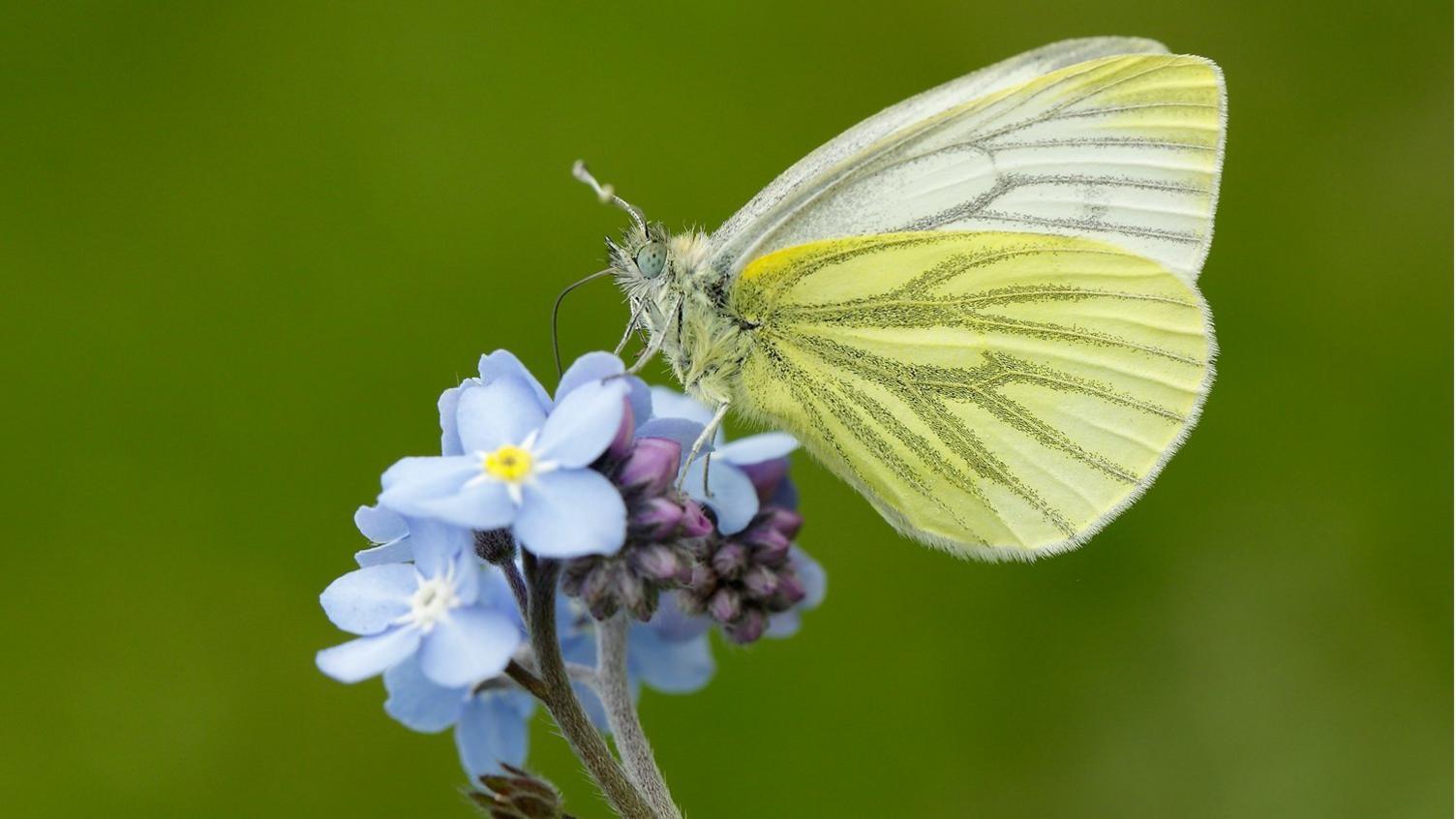How well are different UK species of butterflies doing?
- Published
- comments

The Green-veined White had a poor year, which is thought to likely be linked to droughts in 2022
The team behind a yearly check on butterfly numbers say they have recorded the lowest count ever for some species in Britain.
The UK Butterfly Monitoring Scheme recorded a mixed picture for 58 types of butterflies last year, with some species growing in numbers, such as the Chequered Skipper, Brimstone and Large Blue, which had their best year since 1976.
But there were was a worrying decline for a the Small Tortoiseshell, as well as the Small Pearl-bordered Fritillary.
Scientists say that human activity, including habitat destruction and climate change, are behind the change in numbers.
Have you seen a Red Admiral in your garden? It's recorded its best ever year!
How can experts tell which butterflies are doing well?
The UK Butterfly and Monitoring Scheme has been running for nearly fifty years.
The key method involves weekly counts of butterflies between April and September.
This takes place across 3,000 sites every year.
It helps experts understand changes to butterfly population and reasons why this is happening.
Small Tortoiseshell had its worst year on record in England. It didn't do well in Scotland or Wales either, but did really well in Northern Ireland
Try our butterfly quiz!
The Large Blue, which was reintroduced to the UK after becoming extinct in the 1970s, recorded its best year yet.
Other species doing well include Brown Argus, Marbled White, Comma, Black Hairstreak, and Holly Blue, which all had their top three best years since 1976.
But species such as the Cryptic Wood White, Grizzled Skipper, Grayling and Scotch Argus had a more difficult time.
What affects how well butterflies are doing?
This is a Brown Argus which has had one of its best years since 1976
Butterfly numbers fluctuate naturally from year to year, largely due to the weather.
Dr Richard Fox, Head of Science at Butterfly Conservation, said there are also other things at play.
He said: "The long-term trends of UK butterflies are mainly driven by human activity, including habitat damage and destruction, pesticide use, pollution and climate change.
"By monitoring long-term butterfly trends we can learn about the impact of climate change and other factors on our native wildlife."
- Published9 August 2023
- Published14 July 2023
- Published3 June 2023
